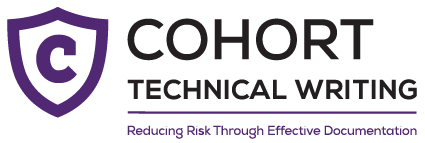Imagine this … you walk in to a job interview for the position of your dreams. It’s a position that you have been heading towards your entire career. It’s now time to impress the executives on the hiring board. Do you wear your:
a) tuxedo?
b) shorts, t-shirt, and sandals?
c) best suit?
d) most appropriate clothing for the position?
Without knowing what the job is, or what the company culture is, the ‘best’ answer to this question would have to be ‘d’. The purpose for wearing appropriate clothes is to show that you ‘fit’ into the company culture, that you understand how appearance affects perceived quality, and that you belong.
All of these thoughts about you are generated within the first 3 seconds of seeing you for the first time. Yes, even before you start to speak. Indeed, if something goes wrong, there is often no opportunity to undo a bad first impression. Someone other than you will likely get the job.
In a similar manner, when submitting a final document, formatting matters. You would not wear torn, dirty clothes to a job interview. How your document appears affects its perceived quality—in every industry. As a writer, if you want your document to be perceived as high quality, it needs to be clean, concise, and formatted well. Once your audience has seen your document for the first time, they will then start reading (hopefully!), giving you a chance to impress them with your content.
How can you improve your structure and formatting?
Unfortunately, there is no 1 best answer for this question.
The answer to most questions about style is to ‘do what the [target client] says’. Every company has (or should have!) guidelines for how they want their documents to be written. For example, the Government of Canada’s Industry Canada Style guide for writers and editors can be found [here]. Depending on the purpose of your document and where it will be published, there are many other style manuals in use. The most common systems are:
- MLA Style: English and the Humanities
- APA Style: Psychology and the Social Sciences
- Chicago/Turabian Notes: History and the Humanities
- Chicago/Turabian Author-Date: Physical, Natural, and Social Sciences
For a more comprehensive list of citation styles, the University of Maryland has a great list.
These guides may only cover the citation style. It is important for you as a writer to be sure to check the target client’s Instructions to Authors and to read sample papers for current formatting details.
Common issues in style and formatting include:
- UK or US English spellings
- headings and captions
- notations
- page numbering
- line spacing
- columns and general page layout
If publishing on the web, style sheets can be used to assist your layout needs. For more information on style sheets, see [here].
Overall, as a writer you need to follow all guidelines and instructions, as they contain special instructions for the document, can save you time, answer many queries, and ultimately keep you employed. Not all documents have the same requirements!
At the same time, relying on style and formatting will not help to boost the effectiveness or content quality of a poorly written document. The structure and formatting should be used to call attention to information and improve its usability rather than to distract from a lack of details.
Structure provides a backbone for a technical writing document, allowing for improved usefulness of the document. Developing and applying a consistent structure strategy can be an especially important step in improving documentation.
For more information about improving structure and formatting, or for assistance in establishing consistency guidelines for your organization, please contact us today at info@cohorttechcomm.com for a free, no-obligation quote.
